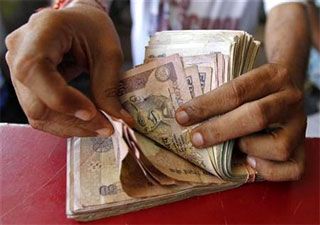RBI Governor Raghuram Rajan has said falling oil prices act as a cushion for CAD, adding it is time India does away with restrictions on gold imports
 Rate cuts by the Reserve Bank of India (RBI), the beginning of a rate-rise cycle in the US, the Union Budget for 2015-16, the movement of crude oil prices and India’s economic growth are seen as the key factors for the currency and bond markets next year.
Rate cuts by the Reserve Bank of India (RBI), the beginning of a rate-rise cycle in the US, the Union Budget for 2015-16, the movement of crude oil prices and India’s economic growth are seen as the key factors for the currency and bond markets next year.
The markets expect RBI to begin the rate-cut cycle in the quarter ending March next year. While a few experts believe the central bank might wait for the Union Budget before cutting rates, others feel this will be announced at RBI’s next monetary policy review, scheduled for February. “We continue to expect RBI Governor Raghuram Rajan to cut rates by 25 basis points on February 3.
The December policy was dovish, in line with our expectation that RBI would find the balance of risks to its January 2016 six per cent inflation target to be neutral relative to the September policy, which stated upside risks,” Indranil Sen Gupta, India economist at Bank of America Merrill Lynch, said in a note to clients earlier this week.
The repo rate, or the rate at which banks borrow from RBI, stands at eight per cent, unchanged since the last rise of 25 basis points in January this year.
At the end of its two-day policy meeting earlier this month, the US Federal Reserve had said it would be “patient” on the timing of interest rate increases. Since 2012, the Fed has pledged to keep interest rates at zero for a considerable period. The beginning of rate increases will lead to outflow of funds from emerging markets such as India, which could make the rupee and the Indian bond market vulnerable.
On the domestic front, the Street has its share of expectations from the Union Budget 2015-16. If these aren’t met, the markets could see a negative impact. “There is hope the Budget will help the manufacturing sector, as well as infrastructure. We also expect the fiscal deficit will be managed well,” said N S Venkatesh, executive director and head of treasury, IDBI Bank.
In the interim Budget for 2014-15, Finance Minister Arun Jaitley had targeted fiscal deficit of 4.1 per cent of gross domestic product (GDP), against 4.5 per cent in 2013-14.
This year, global oil prices softened significantly, which has helped reduce inflation in India. The fall in crude oil prices has also helped improve India’s current account balance and boost growth. Ahead of 2015, the question on everyone’s mind is ‘how long will global crude prices remain low’?
For the quarter ended September this year, a sharp rise in gold imports and a fall in export growth widened India’s current account deficit (CAD) to $10.1 billion (2.1 per cent of GDP) from $5.2 billion (1.2 per cent of GDP) in the corresponding period last year. For the quarter ended June this year, the deficit was $7.8 billion (1.7 per cent of GDP), show RBI data.
Rajan has said falling oil prices act as a cushion for CAD, adding it is time India does away with restrictions on gold imports. “How long we can rely on that (falling oil prices) is a matter of uncertainty. But I’m also hopeful people will turn towards investing in deposits, bonds or the stock market, as opposed to substantial use of gold as an investment,” he had said.
For the markets, economic growth is an important factor — a growing economy helps attract more foreign flows, which support the rupee against the dollar.
“Agriculture has helped sustain growth, but industry and services are not doing very well. On some aspects, we seem to have bottomed out and are rising from the sub-five per cent growth we had seen. I think GDP growth should be at least five per cent,” said Ashima Goyal, external member on RBI’s technical advisory committee.
It is expected for FY15, GDP growth will be five to six per cent.









